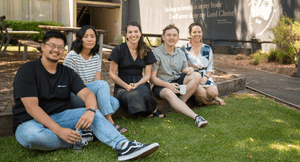Seeing God
Ridley Faculty member, Rhys Bezzant, explores the value of the visual.
Screens, mirrors, icons, and selfies are ubiquitous in our culture. If you hadn’t noticed, we live in times obsessed with the visual. There was once a time when human beings wouldn’t have recognised their own face if you had showed it to them, but now we sculpt, colour, exfoliate and rearrange them according to some standard of beauty. Perhaps even the art of tattoos is a post-modern way of constructing our own body, telling the stories we want to tell and individualising our own body parts.
Of course, the Christian story includes the value of the visual. We discover in Psalm 27 how David wants to see God’s face, and begs God not to turn his face away. Prophets like Isaiah, Ezekiel and Zechariah receive visions to animate their ministry. Though we are too late to see him, the Son of God took flesh in the person of Jesus Christ and demonstrated to the world his commitment to creaturely life, dying a physical death and being raised with a body to make us the children of God. Even the apostle John belabours the reality of Christ’s incarnation when he points out that he had experienced Jesus with his eyes, his hands, and his ears (1 John 1:1-3). Physical reality is not in opposition to spiritual truth. In fact, the one can bear the other. The visual is not essentially bad.
But nonetheless what John does next in those verses in 1 John is extraordinary. To give his readers assurance of the reality of Christ, he does not paint a picture of the Christ whom he has seen, nor does he capture his breath, or bottle his blood. He simply declares in words what he has experienced, and makes the even bolder claim that this declaration in words is the basis of fellowship between John and his readers, and between them and God the Father and God the Son. Words function as the material link between the incarnate Christ and our own Christian experience, for it is the word of the Gospel which creates the church. There is value in the visual, but there is great worth in the Word.
Now is not the time to give up preaching. Our visual culture needs verbal interpretation. Our fractured and frail world needs more than ever to discover the truth that God provides us with meaning and direction and the possibility of coherent experience. Of course, God has blessed us with the sacraments of baptism and the Lord’s Supper, in the memorable phrasing of Saint Augustine described as “visible words,” to picture the promises of God, as Calvin would later say. God does preach to us through our eyes as well as our ears, but the word of promise is still primary, and the sacraments derive their power from God’s promises to us and his presence with us.
One day, all those who trust in Christ will see him face to face. The Scriptures close with the vision of God dwelling intimately with his people, when the personal nature of our faith will be evident to all. We will see God at the end, but we will also with our voices cry out in praise.






